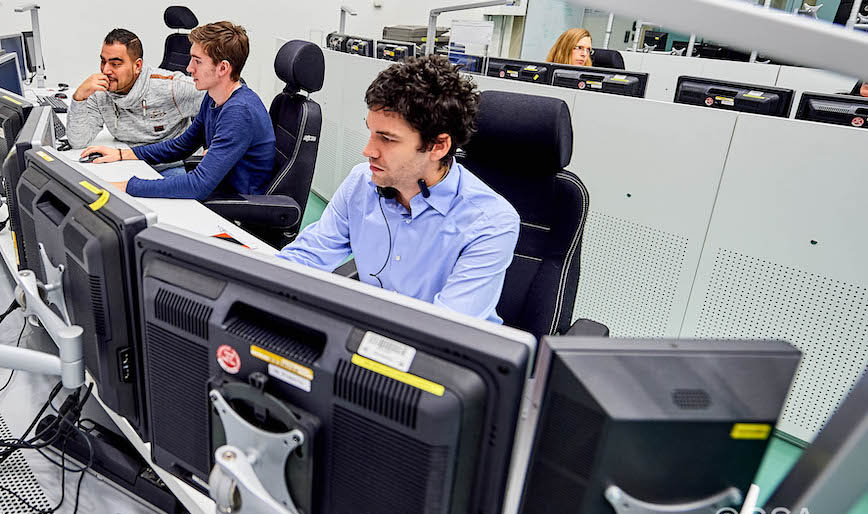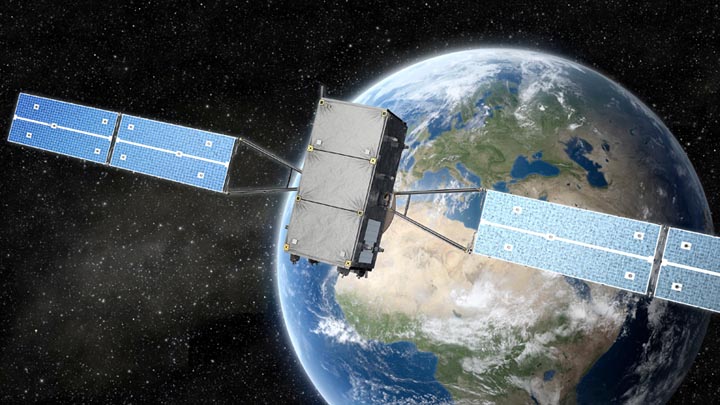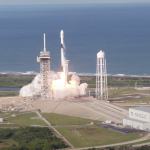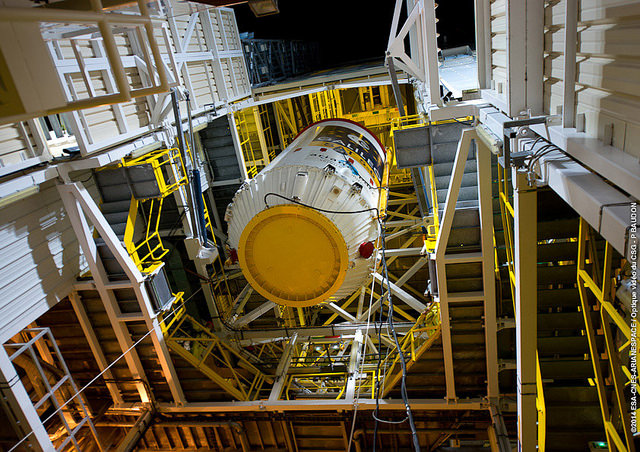After an upgrade of the global Galileo Control Segment to Version 3.0, next month’s satellite launch will be the first overseen from an existing Galileo Control Centre, rather than requiring an external mission control site. All earlier Galileo satellites’ Launch and Early Operations Phase (LEOP) have been overseen from either the European Space Agency’s (ESA’s) ESOC control centre in Darmstadt, Germany, or the French space agency CNES site in Toulouse, France.
Encompassing the two Galileo Control Centers in Oberpfaffenhofen, Germany and Fucino, Italy, as well as six Telemetry, Tracking and Control (TT&C) ground stations around the world, the upgrade was performed by an industrial consortium led by GMV in Spain. The upgrade enables Galileo Control Segment (GCS) to supervise up to 38 satellites, well beyond its previous 26-satellite capacity. It also Galileo Control Segment (GCS) can supervise up to 38 satellites.
Over the last three years a complete technological refresh of the GCS software and hardware, including the porting of software modules corresponding to several million lines of code, the deployment of equipment at many Galileo sites and the execution of a rigorous level of testing throughout all elements comprising the system.
Commencing in mid-2018, the upgrade had to contend with the worldwide COVID-19 pandemic midway through its lifetime, but the team pushed on to finally conclude at the end of July. Since the 4 August 2021 it has been used to nominally operate all the satellites in the constellation.
The project was overseen by ESA in its System Prime role managing Galileo’s design, development, qualification and deployment of future upgrades on behalf of the European Commission. Galileo’s worldwide ground segment is operated by the Spaceopal company, a joint undertaking between Italian company Telespazio and German firm Gesellschaft für Raumfahrtanwendungen mbH, set up especially for this purpose, under contract to EUSPA, the EU Agency for the Space Programme. The ground segment is divided into two segments: the Galileo Mission Segment, which oversees the functioning of the satellites’ navigation payloads including the generation of their signal messages, and the GCS which oversees the functioning of the satellites themselves.
The GCS, through itsTT&C stations spread around the world, gathers and analyzes telemetry to monitor satellites’ overall health as well as to identify and correct, via telecommands uplinked to the satellites, any orbital drift that might degrade Galileo accuracy or any other contingency detected on-board.
“The original Galileo Control Segment design was initiated in the early 2000s and has consistently evolved to cope with the rate of Galileo launches but it was the time for a complete refresh,” explained Pedro Rodríguez de Andrés, GCS System Engineer. “Part of the purpose of this upgrade was to deal with obsolescence, eliminate anomalies and enhance overall reliability through introducing state-of-the-art technologies that would also pave the way to future expansions. The upgrade also adds significantly to the system’s cybersecurity and security monitoring, making the satellites more secure than ever.”
The November launch of Galileo satellites 27-28, the first of the Batch 3 Galileo operational satellites, will take the system one step further towards Full Operational Capability, expected to be declared in 2023 after two further launches. After that will commence the age of the new Galileo Second Generation satellites, featuring enhanced navigation signals and capabilities, are already in development with deployment expected to begin by 2024.






